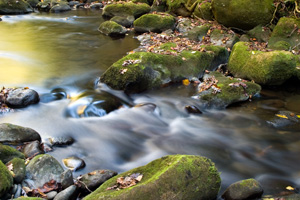 Ecotoxicity models for selenium have historically used total selenium concentrations to determine the risk to the ecosystem. However, more and more regulatory agencies are gaining an understanding of how the molecular form of selenium can impact the environment. Different molecular forms of selenium (species) will bioaccumulate (increase in tissue concentration) at different rates in lower trophic organisms, affecting the food chain at the basest level. Certain organic selenium species, such as selenomethionine, can bioaccumulate at a rate much faster than inorganic selenium species, such as selenite and selenate. To support the scientific demands of ecotoxicity models and investigations, Brooks Applied Labs has developed a new method for supporting selenium speciation analyses with a detection limit of 0.005 µg/L, which reflects applied dilutions for water samples.
Ecotoxicity models for selenium have historically used total selenium concentrations to determine the risk to the ecosystem. However, more and more regulatory agencies are gaining an understanding of how the molecular form of selenium can impact the environment. Different molecular forms of selenium (species) will bioaccumulate (increase in tissue concentration) at different rates in lower trophic organisms, affecting the food chain at the basest level. Certain organic selenium species, such as selenomethionine, can bioaccumulate at a rate much faster than inorganic selenium species, such as selenite and selenate. To support the scientific demands of ecotoxicity models and investigations, Brooks Applied Labs has developed a new method for supporting selenium speciation analyses with a detection limit of 0.005 µg/L, which reflects applied dilutions for water samples.
Selenium is a micro-nutrient necessary for the viability of most biological organisms. However, the window of nutritional value for lower trophic organisms, such as benthic invertebrates, fish, worms, birds, and insects, is narrow and specific to the chemical and biological environment. Ecological risk assessors use a term called the Kd value, which is a direct relation between the concentration of a contaminant in an organism and the water around it. Release of selenium species to the environment with higher Kd values, such as selenomethionine, can result in higher mortality rates of fish and birds. Thus, it is essential to measure selenomethionine and other organic selenium species at much lower concentrations than selenite and selenate, as it will have an effect at much lower concentrations. Depending on the ecosystem, an aquatic concentration of selenomethionine as low as 0.05 µg/L can have detrimental impacts on organisms. This is further confounded by the presence of other organic selenium species, such as methylseleninic acid or dimethylselenoxide, which can also significantly contribute to selenium bioaccumulation.
To meet the scientific demands and data objectives of our industrial clients, regulatory communities, and academia, Brooks Applied Labs has developed a selenium speciation method that supports a detection limit of 0.005 µg/L. This ultra-low detection limit reflects applied dilutions which is the lowest in the industry. The method currently supports the quantitation of selenite, selenate, selenomethionine, methylseleninic acid, selenocysteine, selenocyanate, selenosulfate, and dimethylselenoxide. Sample matrices that are currently supported include: groundwater, river water, wastewater effluent, lake and pond water, as well as some in-process wastewater streams.
Application of other methods for selenium speciation analysis with higher detection limits can often produce results with a higher degree of variability or non-detectable results for most organic selenium species. When a sample result below the detection limit is encountered, it is often best practice (most conservative) to apply the detection limit number to the bioaccumulation model. Once again, at higher detection limits this can yield unacceptable projected consequences for the environment.
The new analytical method Brooks Applied Labs is offering is another testament to our devotion to science, our level of understanding about how our results are applied, as well as our desire to meet the data objectives of our clients. Contact us today to identify how partnering with Brooks Applied Labs can help you meet your current and future analytical needs for regulatory compliance, ecological modeling, and other investigations associated with selenium.
